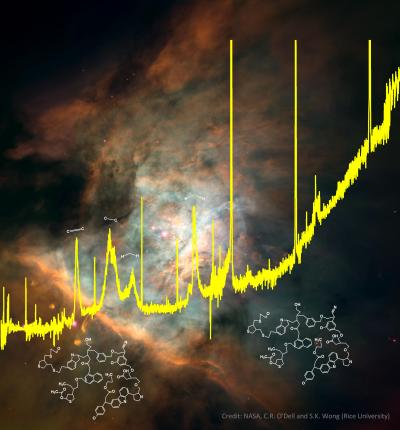It's not quite extraterrestrial life, but it's certainly a step towards finding something of that ilk.
Stars, it appears, can create complex organic compounds. Complex compounds such as? Well, something similar to those of coal and petroleum. Which is pretty complex, considering the time and effort it takes humans to refine the latter out of the ancient remnants of organic life found on our own planet. Isn't it just typical though, that of all the energy sources that the universe decides to let us discover in abundance, that it had to be compounds so similar to the ones we're already using to wreck our own planet?
Source: The University of Hong Kong
Astronomers discover complex organic matter in the universe
Prof. Sun Kwok and Dr. Yong Zhang of the University of Hong Kong show that an organic substance commonly found throughout the Universe contains a mixture of aromatic (ring-like) and aliphatic (chain-like) components. The compounds are so complex that their chemical structures resemble those of coal and petroleum. Since coal and oil are remnants of ancient life, this type of organic matter was thought to arise only from living organisms. The team's discovery suggests that complex organic compounds can be synthesized in space even when no life forms are present.
The researchers investigated an unsolved phenomenon: a set of infrared emissions detected in stars, interstellar space, and galaxies. These spectral signatures are known as "Unidentified Infrared Emission features". For over two decades, the most commonly accepted theory on the origin of these signatures has been that they come from simple organic molecules made of carbon and hydrogen atoms, called polycyclic aromatic hydrocarbon (PAH) molecules. From observations taken by the Infrared Space Observatory and the Spitzer Space Telescope, Kwok and Zhang showed that the astronomical spectra have features that cannot be explained by PAH molecules. Instead, the team proposes that the substances generating these infrared emissions have chemical structures that are much more complex. By analyzing spectra of star dust formed in exploding stars called novae, they show that stars are making these complex organic compounds on extremely short time scales of weeks.
Our work has shown that stars have no problem making complex organic compounds under near-vacuum conditions
says Kwok.
Theoretically, this is impossible, but observationally we can see it happening.
Most interestingly, this organic star dust is similar in structure to complex organic compounds found in meteorites. Since meteorites are remnants of the early Solar System, the findings raise the possibility that stars enriched the early Solar System with organic compounds. The early Earth was subjected to severe bombardments by comets and asteroids, which potentially could have carried organic star dust. Whether these delivered organic compounds played any role in the development of life on Earth remains an open question.
Prof. Sun Kwok is the Dean of Science and Chair Professor of Physics of the University of Hong Kong. He serves as Vice President of Division VI (interstellar matter) of the International Astronomical Union, and is the incoming Vice President of Commission 51 (bioastronomy) of the International Astronomical Union. He has published many books, including the recent book "Organic Matter in the Universe" (Wiley, 2011).

The aim of art is to represent not the outward appearance of things, but their inward significance. – Aristotle















